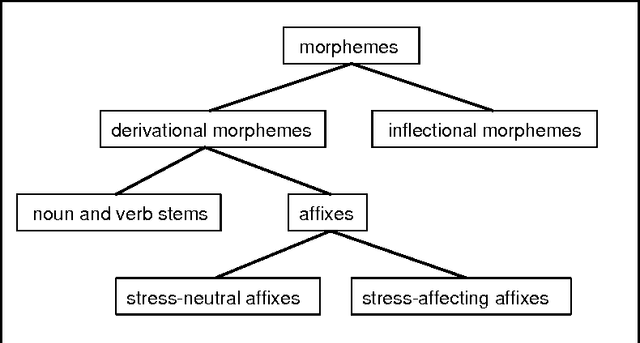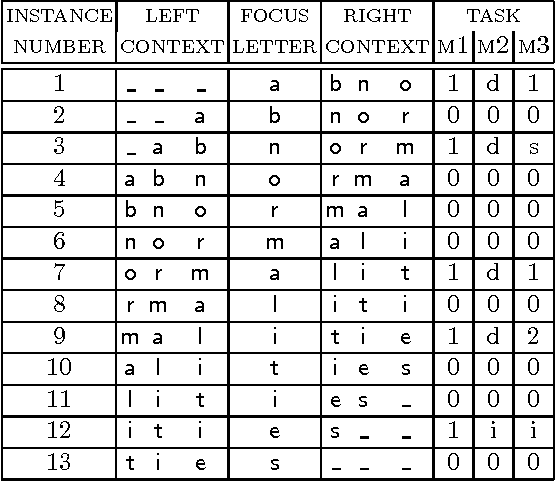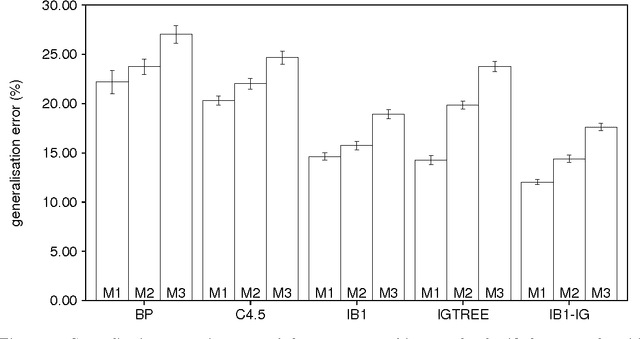Morphological Analysis as Classification: an Inductive-Learning Approach
Paper and Code
Jul 16, 1996



Morphological analysis is an important subtask in text-to-speech conversion, hyphenation, and other language engineering tasks. The traditional approach to performing morphological analysis is to combine a morpheme lexicon, sets of (linguistic) rules, and heuristics to find a most probable analysis. In contrast we present an inductive learning approach in which morphological analysis is reformulated as a segmentation task. We report on a number of experiments in which five inductive learning algorithms are applied to three variations of the task of morphological analysis. Results show (i) that the generalisation performance of the algorithms is good, and (ii) that the lazy learning algorithm IB1-IG performs best on all three tasks. We conclude that lazy learning of morphological analysis as a classification task is indeed a viable approach; moreover, it has the strong advantages over the traditional approach of avoiding the knowledge-acquisition bottleneck, being fast and deterministic in learning and processing, and being language-independent.
 Add to Chrome
Add to Chrome Add to Firefox
Add to Firefox Add to Edge
Add to Edge